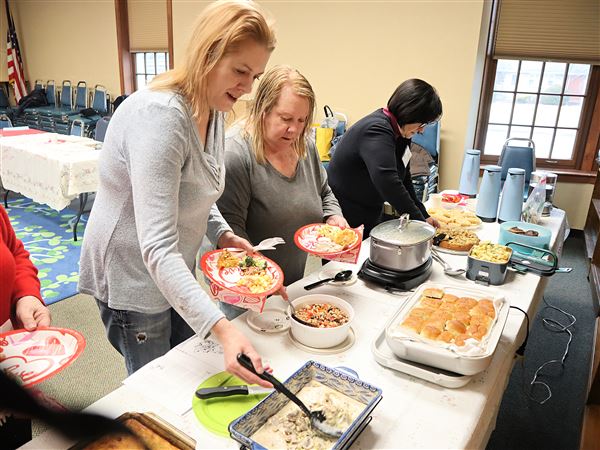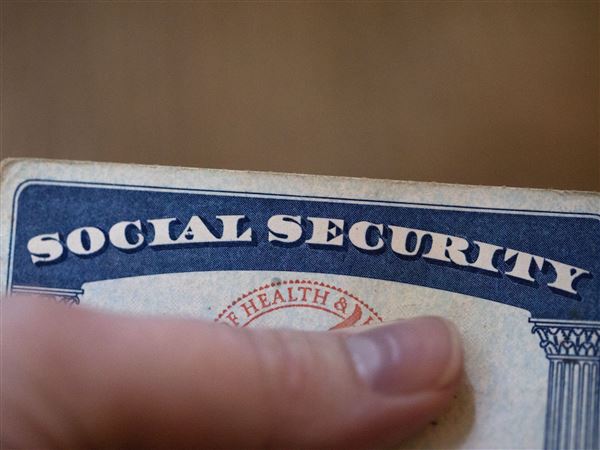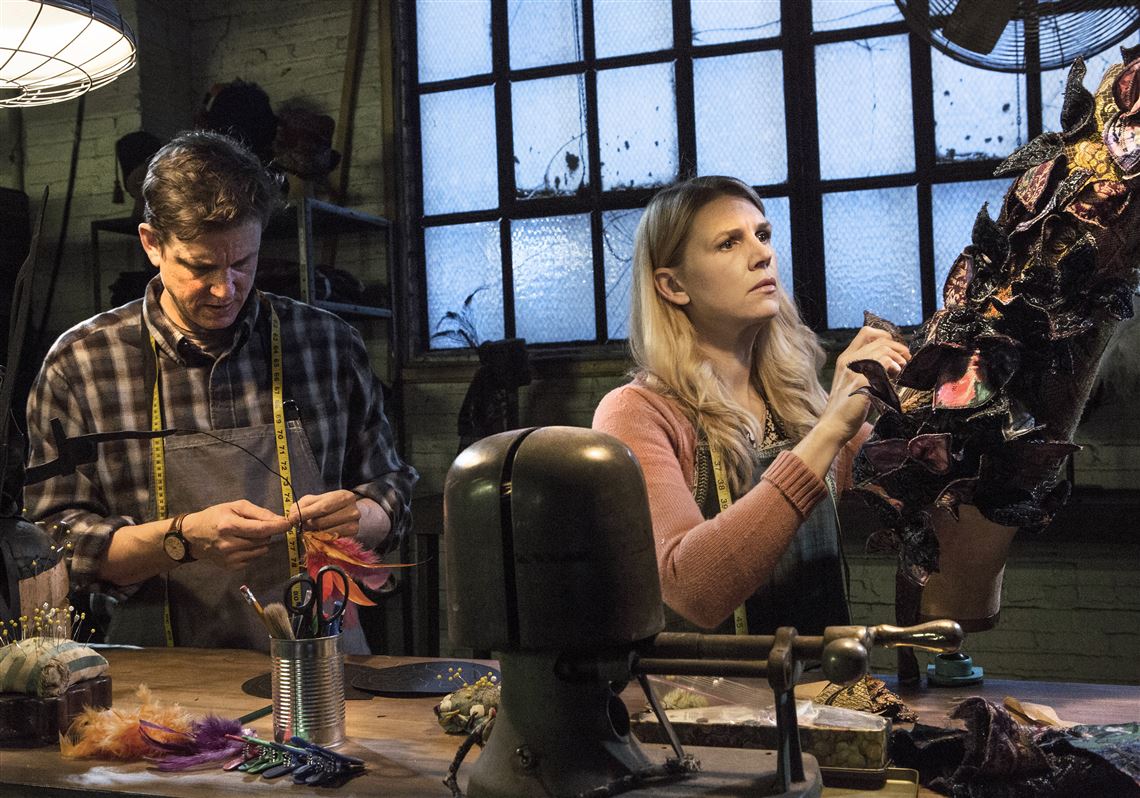There isn’t a whole lot going on in Quantum Theatre’s digital production of Caryl Churchill’s “Far Away.” On the other hand, everything is happening in this play.
The production, filmed with elaborate, realistic sets and striking visual design, brings viewers into a world not unlike our own. An unnamed woman (the credits reveal her name is Joan) witnesses a shocking occurrence outside a house in a city’s hinterlands. An older woman (presumably her aunt) seems not to want to discuss it until she decides to trust her with the bitter truth.
The play, directed by filmmaker Joe Seamans and Quantum artistic director Karla Boos, is broken into three sections: the country house, a milliner workshop and subsequent parade of hats, and a return to the house years later. Churchill seems intent on having nearly all the action happen … far away from the rest of the play. It’s the oblique references and subtle gaslighting of characters that beckons viewers to contemplate what kind of civilization we live in today. The horrors are frequently mentioned but seldom seen.
These characters are forced to consider that nowhere is as safe as they thought it would be, and neither computer programmers nor car salesmen nor cats nor grass or even water itself can be considered free of allegiance. It’s the disturbing endpoint of extreme partisanship and feels eerily reminiscent of the Capitol insurrection, pandemic, extreme weather and gross injustices happening just outside our own workplaces.
Lisa Velten Smith, a mainstay of Pittsburgh theater, is not given a lot to work with here, but perhaps that’s the point. As Joan, she serves as a blank canvas while sinister forces and brutal decisions swirl just outside the window. Smith appears almost childlike in her approach to the first scene as she tries to put together the pieces of what she has seen.
Eventually Joan becomes a milliner for a surreal, unsparing contest and works with fellow hatmaker Todd (Andrew William Smith, her real-life husband), who is disillusioned by a boss exploiting his craftsmanship. Joan seems apprehensive about Todd’s eagerness to fight the powers that be, yet she’ll smile at him over a work table of hats meant for a cruel spectacle.
Smith taps into the futility Todd ultimately feels, soldiering on when he’d rather rest, just for a day, with the one he loves. His co-worker offers this chilling line, “When you just step in, you don’t know what’s going to happen.” Joan is no child anymore.
In spite of the camera-ready gravitas the couple provides, the real star of this production is Ingrid Sonnichsen, who nails the English playwright’s turns of phrase as Aunt Harper. She completely loses herself in the role of a haggard survivor with plenty of outside intel but few resources to defend herself. That, too, seems prescient for a play written in 2000. We have access to more information than ever, but verifying it becomes harder and harder. So much for the journalist mentioned in the play as a potential force for good.
The other major draw for “Far Away” is the production design, led by Quantum’s Hank Bullington and scenic designer Kelsey Garrett. The country house feels like it’s been lived in for decades, while the workshop seems just right for the isolating, dystopian crafting on display. Curiously, the hat parade scene seems like “The Hunger Games” if it were directed by YouTube musical reimaginer Todrick Hall. Lighting designer Sydney Asselin also deserves plaudits for creating the washed-out, overcast sky of the third scene.
As the three characters enter and exit the frame and sometimes obscure the view, director of photography Mark Knobil gives “Far Away” a claustrophobic feel that echoes the theme of evil closing in on the trio. In each scene’s beginning, viewers start out high above the location, and the camera slowly narrows into the setting, reminiscent of the opening to Hitchcock’s “Psycho.” The line between theater and film blurs to a point of unrecognizability in the third scene, which bodes well should Quantum decide to revisit such a hybrid format.
Seeing streets with familiar-looking cars and buildings in urban scenes at the workshop means for all this talk of distant tragedy, “Far Away '' is closer than one would like to think. Amid conversations of destruction and injustice without proper context, viewers become like Joan in the window, questioning what they saw but knowing what it likely means. Which side are you on?
“Far Away” is available on demand through March 7 at quantumtheatre.com. Tickets start at $10.
Tyler Dague: rdague@post-gazette.com, 412-263-1569 and on Twitter @rtdague.
First Published: February 20, 2021, 2:18 p.m.

















